Escape the bustle of Tokyo for a day and immerse yourself in nature. From hiking and hot spring baths, there are many ways to enjoy Japan’s natural assets.
Tokyo is a vast, bustling metropolis, but it is also a convenient base to explore the natural beauty of Japan’s National Parks. With an efficient transport network, you can be climbing a mountain, exploring ancient temples or kayaking off the coast within a few hours.
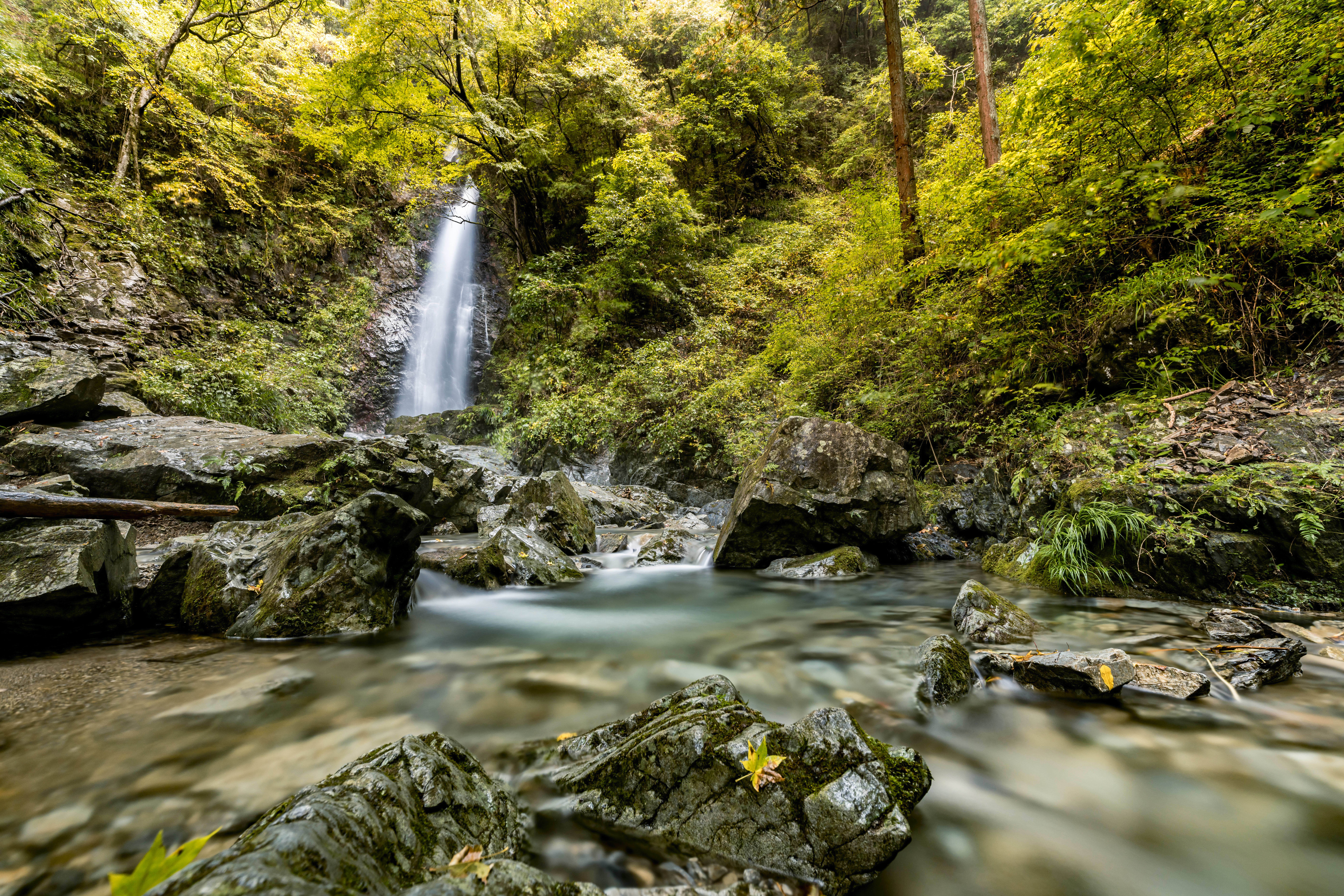
Chichibu-Tama-Kai
Chichibu-Tama-Kai National Park is a convenient getaway from the city, with sections of the park within Tokyo's borders. The whole park covers four prefectures, with scenic hikes through mountains, gorges and dense forests. The easiest areas to reach for a day trip are the popular hiking courses around Mount Mitake in Tokyo’s Okutama area, and the rivers and forests of Chichibu in Saitama.
Mount Mitake (929 m) offers easy hiking routes through cedar forests, with detours to waterfalls. At the summit, you can visit Musashi-Mitake-jinja Shrine, said to have been founded over two millennia ago. Mount Mitake has some steep sections, but you won’t need any special equipment beyond sturdy shoes. You can hike up from the base or take a cable car halfway up, to save time and energy.
The Chichibu area is just 45 minutes by train from Ikebukuro. A combination of local buses and hiking will get you around the area, with ancient shrines, mountains and waterfalls. The small town of Owa, about 40 minutes by bus from Seibu Chichibu Station, is a good place to start exploring. In winter, photographers flock to see the Misotsuchi icicles, a series of frozen waterfalls near the Arakawa River, a short walk from Owa bus stop. From Owa you can take a bus to Mitsumine Shrine at the top of Mount Mitsumine. The shrine is famed for its ornately carved gates and guardian wolf statues.
How to Get There
It takes less than 2 hours to reach Mount Mitake from Shinjuku Station via Ome Station and a bus to the cable car. The Chichibu area is just over an hour from Ikebukuro Station by train. It takes another 75 min to reach Mitsumine Shrine by bus.
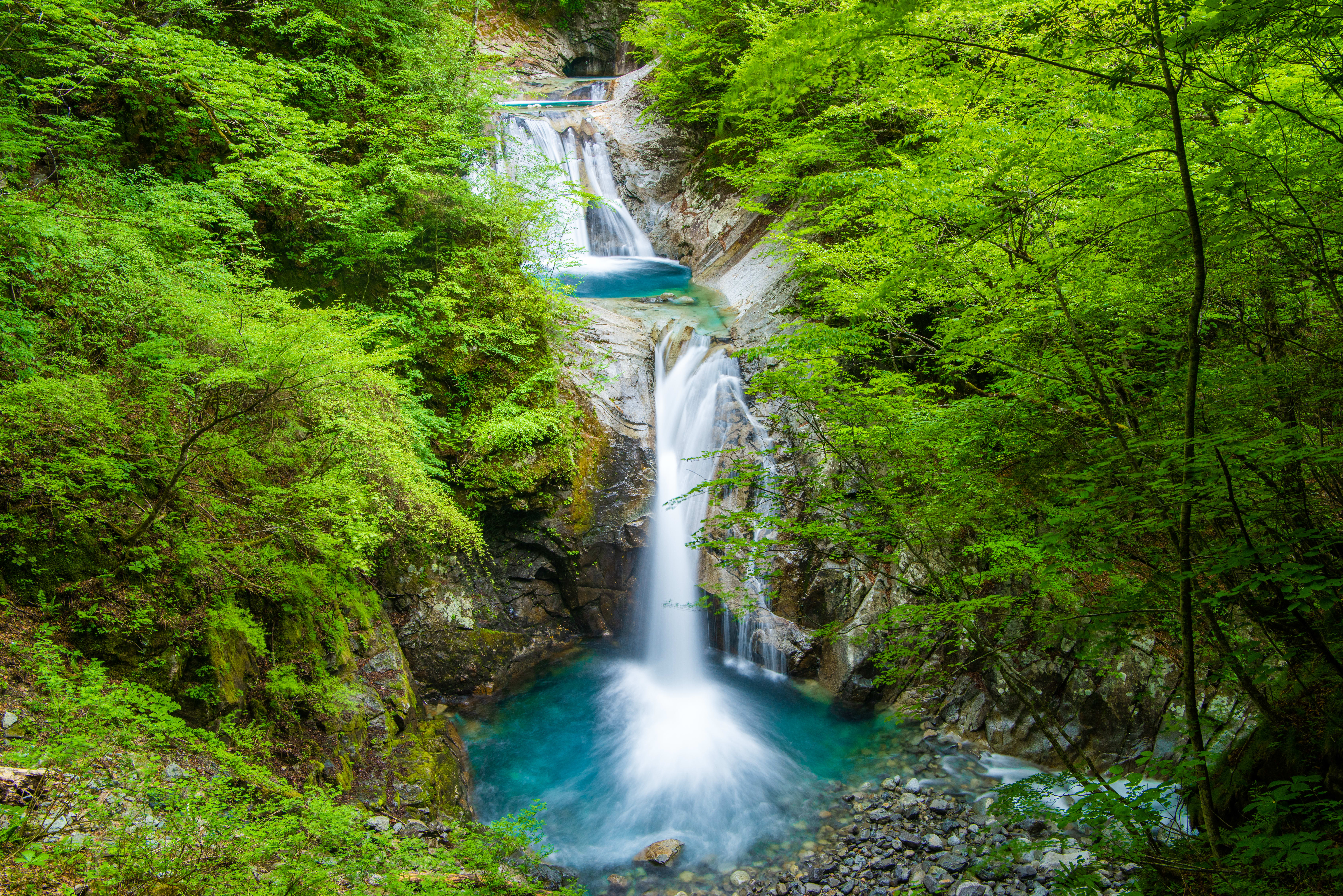
Joshin’etsukogen
This dramatic park covers Gunma, Niigata and Nagano prefectures, with some of Japan’s best hiking and skiing.
Many visitors head to the resort town of Karuizawa in Nagano to escape the summer heat or hike forest trails in fall. In winter, the slopes of Naeba in Niigata and Shiga Kogen in Nagano are a big draw. Tanigawadake Tenjindaira Ski Resort in Gunma is an excellent place to ski or snowboard on powder days.
In summer and fall, take the Tanigawadake Ropeway to get closer to the peak of Mount Tanigawadake, or visit Ichinokurasawa, a popular spot with rock climbers with picturesque views of the huge rock walls.
Mount Asama, which straddles the border between Gunma and Nagano, is one of Honshu’s most active volcanoes. Onioshidashi Park is at the mountain’s northern foot, where visitors can see the rugged lava rock formations flung here during Mount Asama’s eruption in 1783. Visit the Kazawa Information Center to learn more about the highlands and wetlands around Asama.
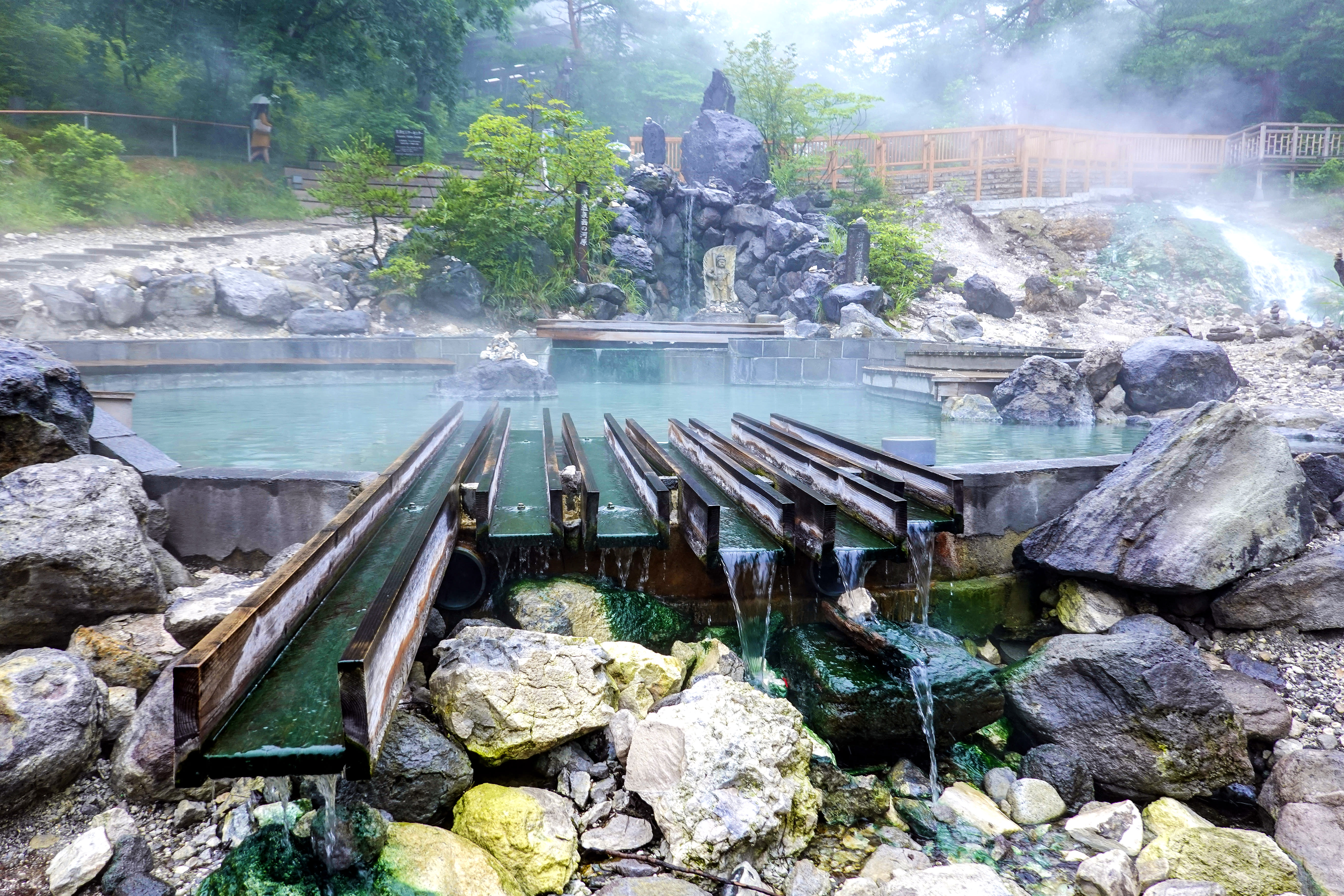
Kusatsu Onsen in Gunma is one of Japan’s most famous hot spring resort towns and the gateway to the ski resorts of Kusatsu Onsen and Shiga Kogen.
How to Get There
Gunma and Nagano are served by express trains and direct bus services from Tokyo. Highway buses from Tokyo reach Kusatsu Onsen in about 4 hours, or you can take an express train and bus in under three hours. The Hokuriku Shinkansen from Ueno will whisk you to Karuizawa in just over an hour.
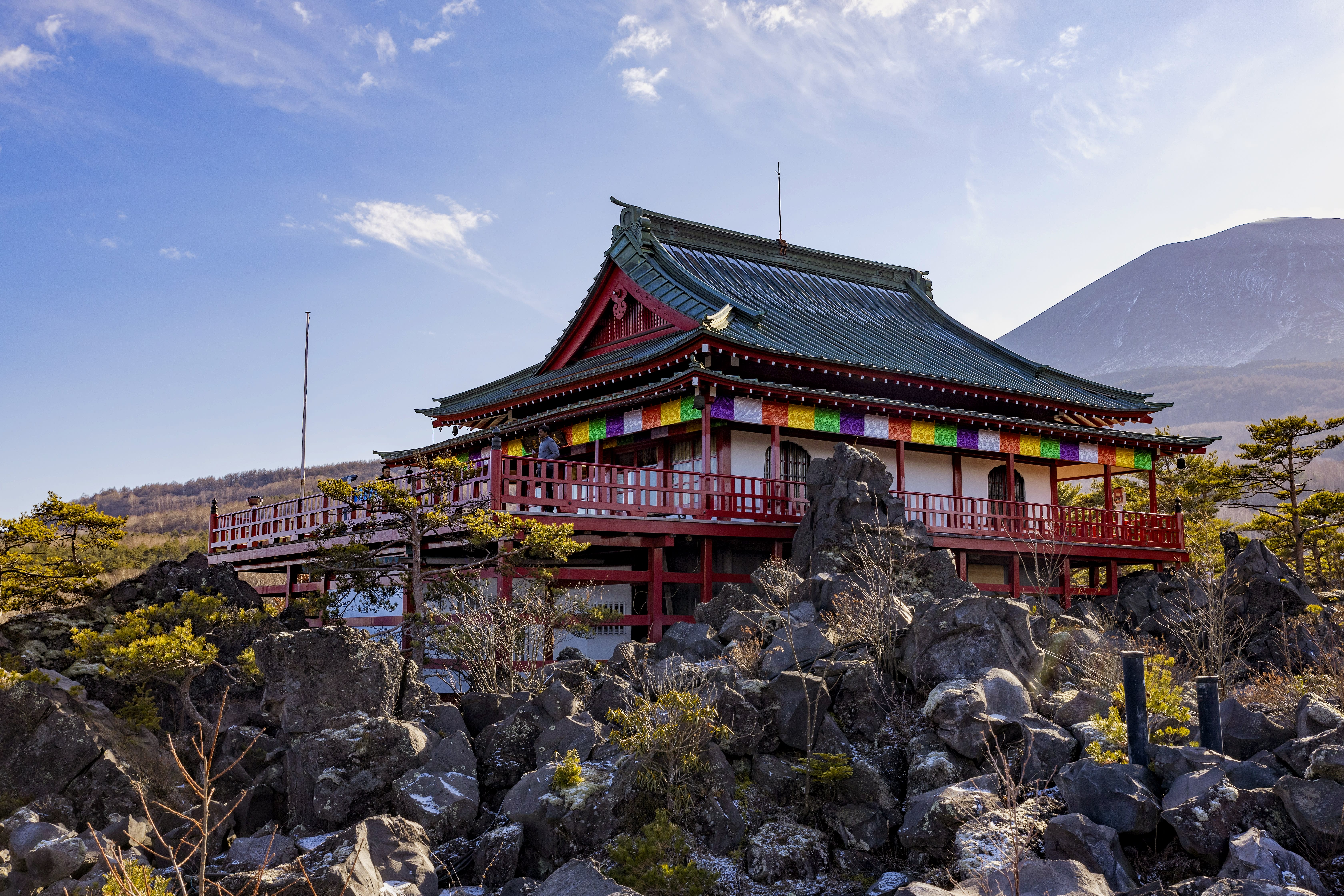
Fuji-Hakone-Izu
Although the outlying Izu islands are difficult to experience in a day trip, the Fuji Five Lakes area, the sulfurous volcanic fields of Owakudani at Hakone, and the rugged Jogasaki coast along the Izu Peninsula are within reach. It is recommended to spend more than one day in these areas, but a day trip is possible if you are short on time. Many sites in Fuji-Hakone-Izu National Park are around 2 hours by train from Tokyo.
For those famed Mount Fuji views, head to the Fuji Five Lakes area. There are several viewpoints and observatories around the lakes. Some of the less crowded viewing spots include Sankodai Observatory near Lake Saiko and Nakanokuratoge Observation Deck near Lake Motosu. There are several bicycle rental shops around Kawaguchiko Station for exploring Lake Kawaguchiko on two wheels, with Mount Fuji as a constant backdrop.
Explore a dense forest covering lava bedrock on a guided hike through Aokigahara Jukai, a forest known as the Sea of Trees, on the northwest face of the iconic mountain. Guides will point out plants and animals along the way.
Hakone is popular for its hot springs and the steaming, volcanic fields of Owakudani on the slopes of Mount Hakone, an active volcano. The area has ropeways, art museums and hiking trails around Mount Hakone.
On the Izu Peninsula, visitors can explore the coastlines created by undersea volcanoes over 20 million years ago on a guided kayak tour from Shimoda. In warmer months, the tours include snorkeling. The peninsula has a convenient train line, allowing you to spend a day hiking along the rugged Jogasaki Coast near Izu Kogen or swimming at Shimoda.
How to Get There
Express trains and highway buses depart from Tokyo, arriving within 2-3 hours, depending on which part of the park you’re headed to. Hakone is a popular driving destination from Tokyo, taking the scenic route along the Ashinoko Skyline and Hakone Skyline.
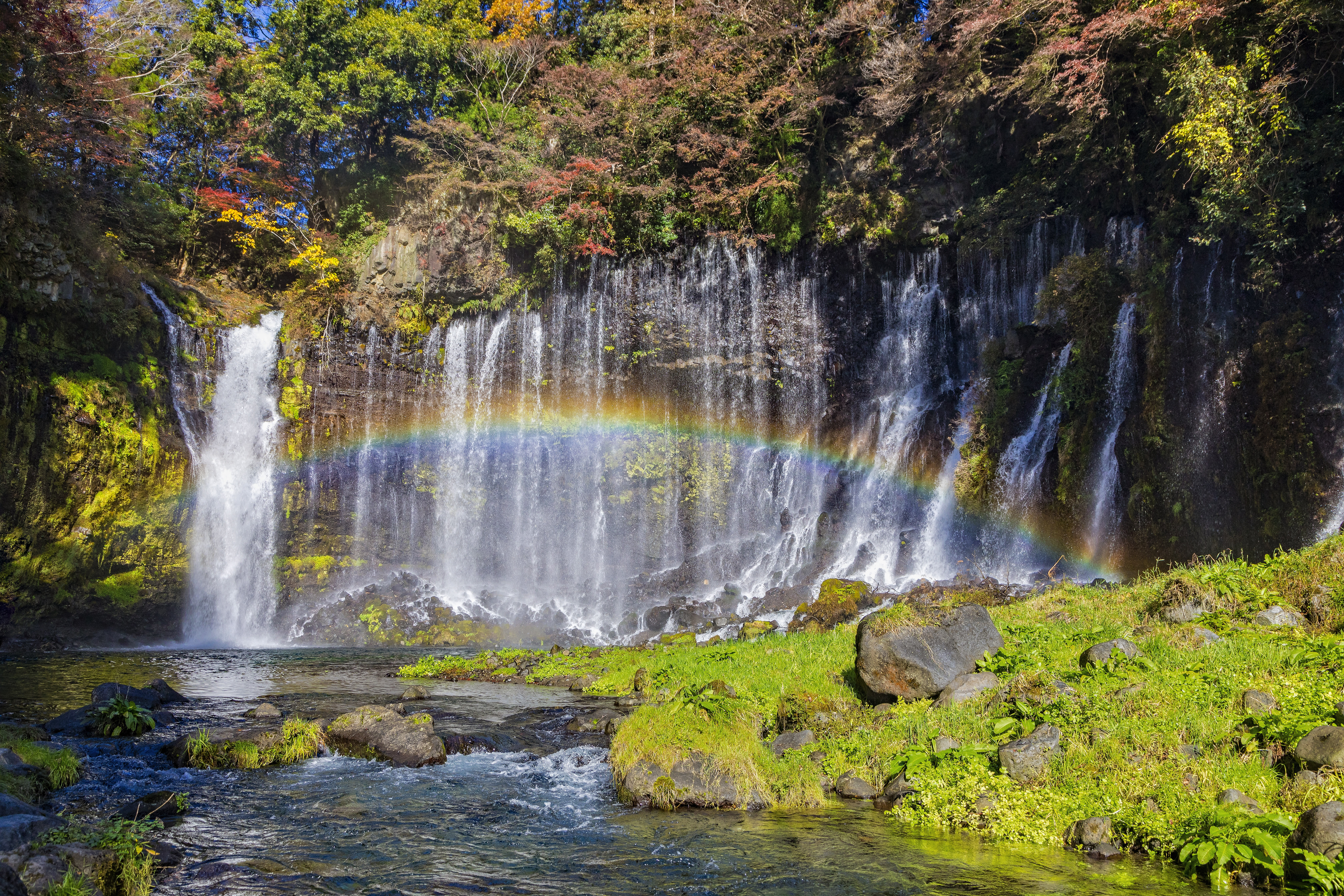
Nikko
Nikko is a popular destination for Tokyo visitors, about 2 hours northeast of the city. It is possible to visit some parts of this park in a day, but many travelers choose to stay overnight for a more relaxing journey.
While ornate Toshogu Shrine is one of the most well-known sites in Nikko National Park, there are many other areas not to be missed. The park sprawls across three prefectures—Fukushima, Tochigi and Gunma—with mountains, lakes, active volcanoes and wetlands. You can try stand-up paddle-boarding (SUP) on Lake Chuzenji, hike to secluded waterfalls, cruise the Kinugawa River, cycle around charming towns and World Heritage sites or relax in one of the area’s famous hot springs.
Most visitors start their day in the town of Nikko, with convenient bus access from the main stations to Toshogu Shrine, Lake Chuzenji and Kegon Falls. From there, you can take a bus to the mountain hiking routes around Okunikko. Head to Senjogahara, one of the largest highland marshes on Honshu, with wooden boardwalks for easy exploring. At the time of writing, a section of the path was closed to hikers due to repair. Please be aware of this before you travel.
How to Get There
You can reach Nikko by express train, highway bus or rental car. Express trains from Shinjuku Station and Asakusa Station reach Tobu Nikko Station in about two hours. Alternatively, you can take the JR Tohoku Shinkansen from Tokyo Station to Utsunomiya Station and transfer to the local JR Nikko Line. The journey to JR Nikko Station takes approximately 2 hours.
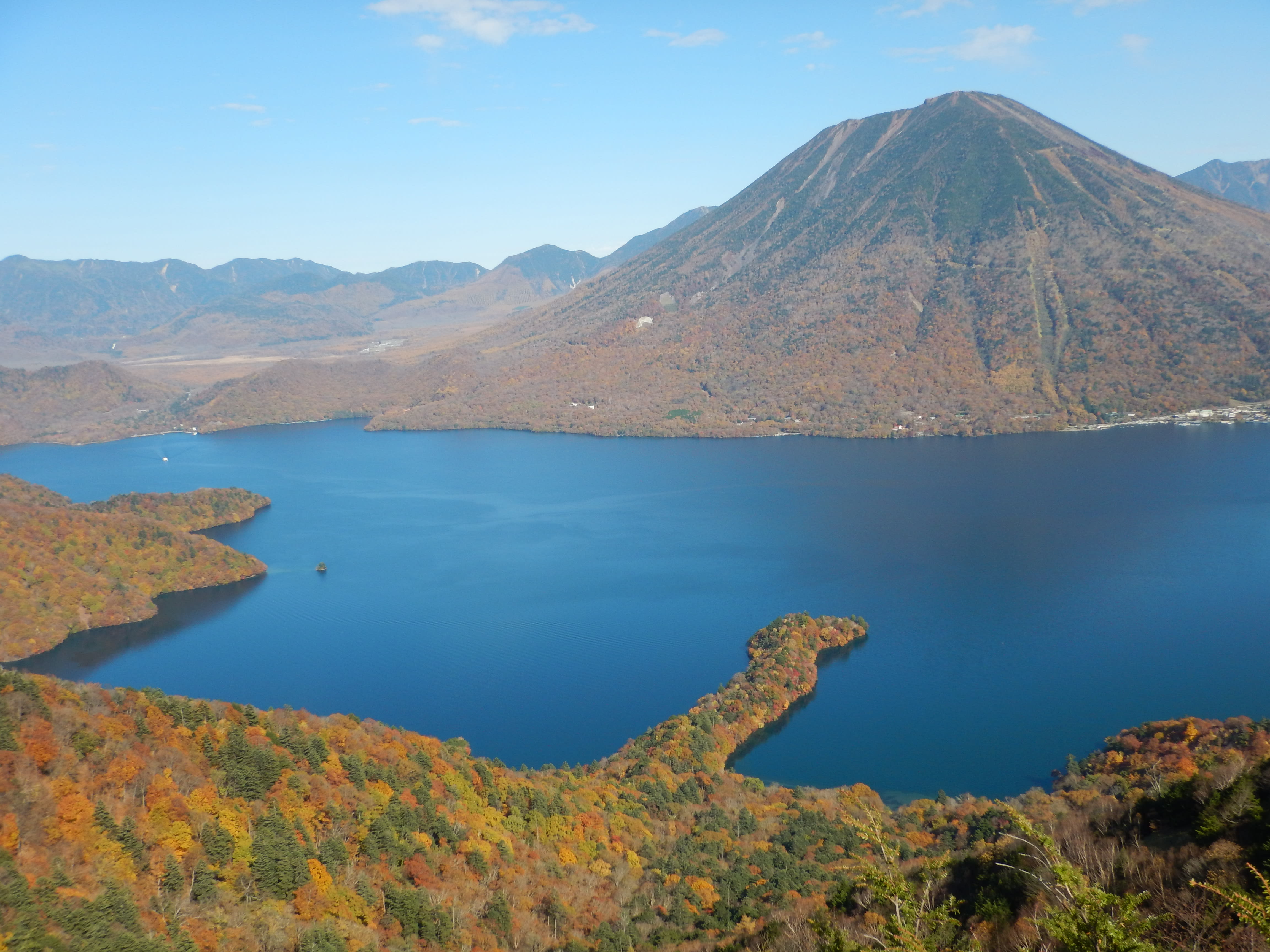
Written by Kirsty Munro


















